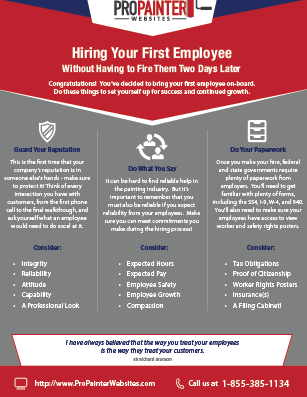Essential Seasonal Aspects Of Commercial Outside Painting: What You Ought To Recognize
Essential Seasonal Aspects Of Commercial Outside Painting: What You Ought To Recognize
Blog Article
Material By-Burnham Rodriquez
When you're preparing an industrial outside painting task, seasonal aspects can make or damage your outcomes. You'll intend to take into consideration how temperature and humidity influence paint application and drying times. Choosing the ideal season can guarantee your paint adheres effectively and lasts longer. But which seasons are truly the most effective for this kind of job? Allow's check out the crucial elements that can impact your project's success.
The Influence of Temperature on Paint Application
When you're planning a commercial outside painting job, the temperature level can substantially influence how well the paint adheres and dries.
Preferably, you intend to repaint when temperatures vary between 50 ° F and 85 ° F. If it's also cold, the paint may not cure correctly, causing issues like peeling or breaking.
On the other side, if it's too warm, the paint can dry out too quickly, preventing appropriate attachment and resulting in an unequal finish.
You should also consider the time of day; morning or late afternoon provides cooler temperature levels, which can be a lot more desirable.
Always examine the manufacturer's referrals for the certain paint you're utilizing, as they usually give support on the optimal temperature range for optimum results.
Moisture and Its Effect on Drying Times
Temperature level isn't the only ecological variable that influences your commercial exterior paint project; humidity plays a considerable duty as well. High moisture levels can reduce drying out times dramatically, affecting the overall top quality of your paint task.
When the air is filled with wetness, the paint takes longer to heal, which can result in concerns like bad attachment and a higher risk of mildew growth. If you're repainting on a particularly moist day, be prepared for prolonged wait times between layers.
It's important to keep track of local weather conditions and strategy accordingly. Ideally, go for humidity degrees between 40% and 70% for optimum drying.
Keeping these consider mind guarantees your project remains on track and delivers a lasting coating.
Best Seasons for Commercial Exterior Painting Projects
What's the most effective season for your industrial external painting tasks?
Spring and very early autumn are commonly your best choices. Throughout these seasons, temperatures are light, and moisture levels are commonly lower, developing perfect problems for paint application and drying out.
Prevent summer's intense heat, which can cause paint to dry too swiftly, leading to inadequate adhesion and coating. Likewise, winter season's cool temperature levels can hinder correct drying out and healing, risking the longevity of your paint work.
straightline house painting for days with temperatures in between 50 ° F and 85 ° F for optimal results. exterior painting toronto in mind to inspect the local weather forecast for rainfall, as wet problems can destroy your job.
Preparation around these aspects guarantees your painting project runs smoothly and lasts longer.
Verdict
In conclusion, planning your business exterior painting projects around seasonal factors to consider can make a substantial difference in the end result. By scheduling work throughout the suitable temperatures and humidity degrees, you'll guarantee far better bond and drying out times. Bear in mind to watch on local weather prediction and select the right time of year-- springtime and very early autumn are your best options. Taking these steps will assist you attain a resilient and professional finish that lasts.
